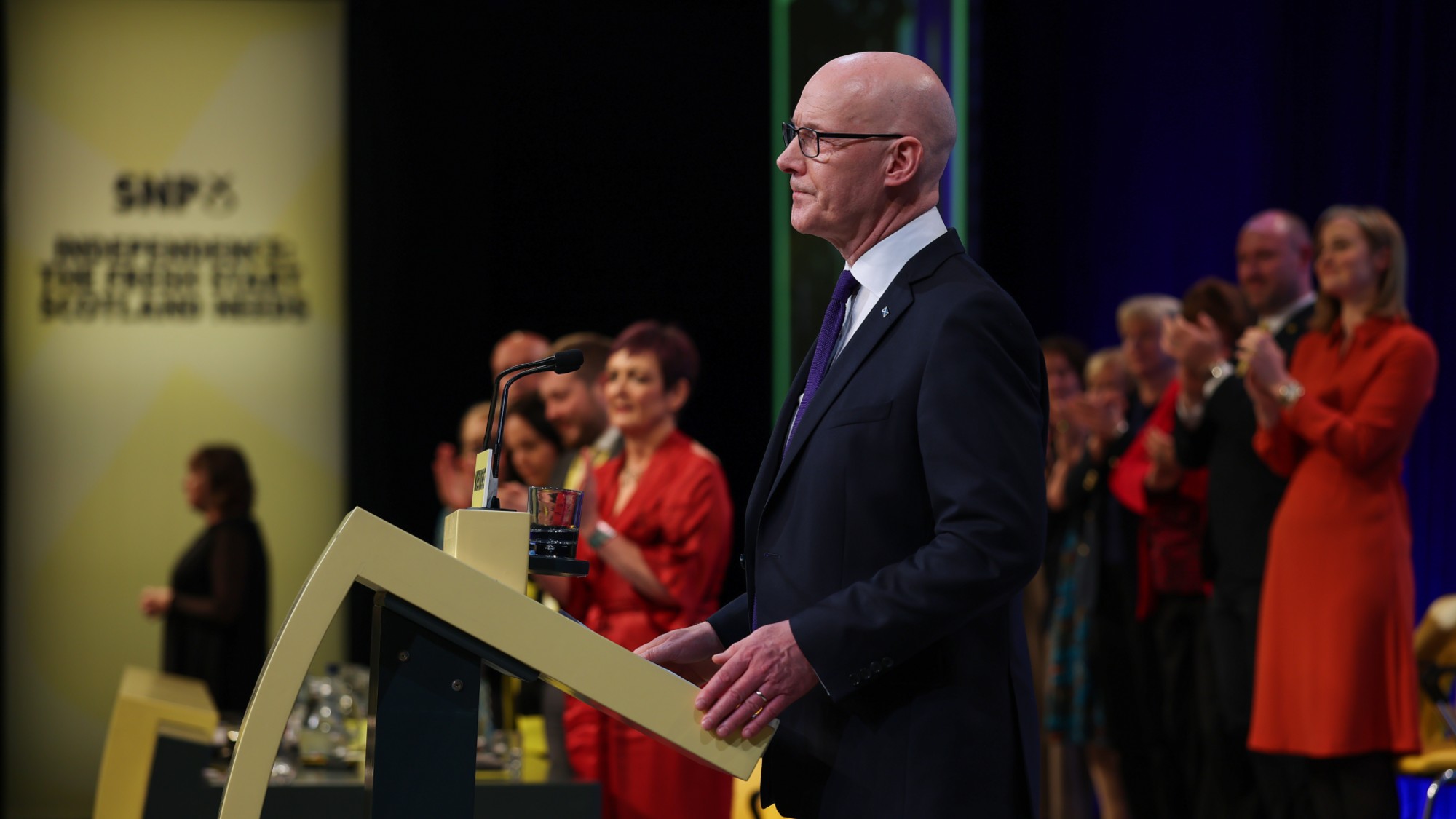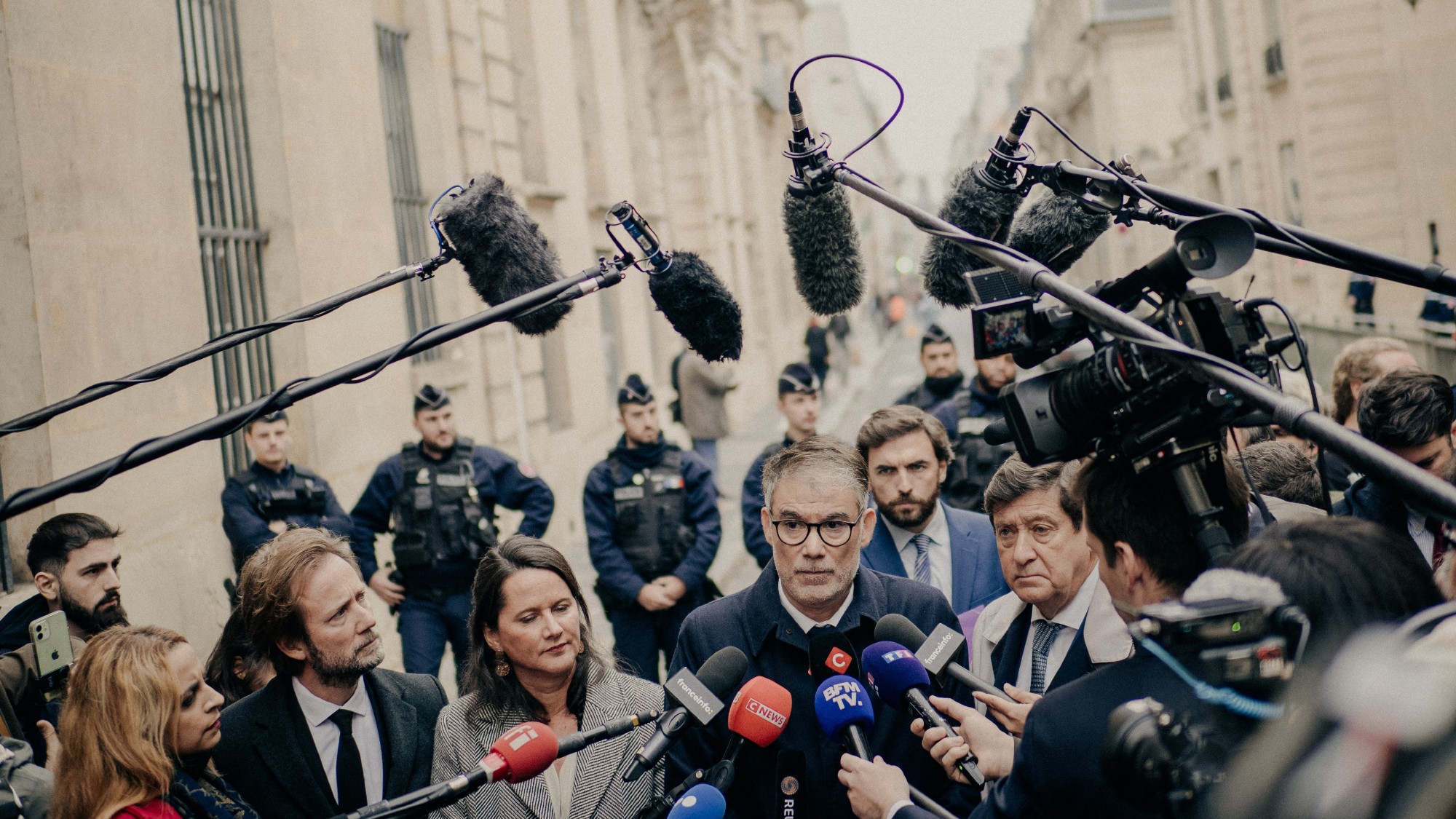Who's really at fault for campus coronavirus outbreaks?
Don't blame students for the failed leadership of adults


You could be forgiven for not knowing the details of the COVID-19 debacle currently taking place on America's college campuses. So much has happened in the U.S. recently — apocalyptic wildfires, violent crackdowns on protests against police brutality, a deeply polarizing presidential campaign — that it's easy to have missed this crisis-within-a-crisis.
But the news from our nation's colleges and universities is bad. In early September, The New York Times reported the existence of nearly 90,000 coronavirus cases at more than 1,190 colleges. That same week, USA Today reported that, "Of the 25 hottest outbreaks in the U.S., communities heavy with college students represent 19 of them." At least one student has died, adding to the dozens of people who died from campus-related cases previously this year.
If you have caught wind of this mess, it may have been via one of the many sensational stories about students breaking the stringent rules placed upon them. At Northeastern University in Boston, 11 students were suspended for the semester for an unsanctioned gathering, and the school pocketed the rest of their $36,000 tuition for the barely-underway term. (That decision was later reversed, with the school still keeping more than $8,500 per student.) From upstate New York came a dramatic New York Times headline: "A Few Students Threw Parties. Now an Entire SUNY Campus Is Shut Down." Stories linking student partying to the spread of COVID-19 have run from CNN, NBC, ABC, The Wall Street Journal, The Washington Post, and a host of local outlets.
The Week
Escape your echo chamber. Get the facts behind the news, plus analysis from multiple perspectives.

Sign up for The Week's Free Newsletters
From our morning news briefing to a weekly Good News Newsletter, get the best of The Week delivered directly to your inbox.
From our morning news briefing to a weekly Good News Newsletter, get the best of The Week delivered directly to your inbox.
But, while badly behaved students make good headlines and easy targets for self-righteous moralizing (and, while, without question, these young folks could be making better decisions), the students are not the real problem here. The campus COVID crisis is largely a problem caused, or at the very least abetted, by school administrators. And it further reveals an issue that those of us involved in the academy have known for some time: The folks who claim to be our society's foremost vendors of leadership are often glaringly devoid of it themselves.
Let us recall the situation over the summer as colleges finalized their plans to bring students back in the fall. There was — and still is — no COVID vaccine. Basic public health measures, like masks and practicing social-distancing, had become politicized among the "adults" in our society, inspiring anti-mask marches, and outbreaks linked to defiantly-held weddings and motorcycle rallies. Meanwhile, the president was steadily spewing misinformation at political rallies that were, themselves, glaring violations of CDC guidelines. Across the country, cases were rising at a rate that sometimes doubled what we saw when most of the country was in lockdown during the spring. The COVID death toll, already unconscionably high, climbed steadily higher, often by more than 1,000 people per day.
By choosing to reopen for in-person or even hybrid models of teaching, as so many schools have done, college presidents and administrators willingly joined our broader culture's dangerous charade of normalcy. While some schools — including Johns Hopkins, Harvard, and Princeton — decided to continue online-only for the foreseeable future, countless campuses across the country invited students back, in some cases while peddling campus-themed personal-protective gear to cover the stench of the crisis with a Febreze-spritz of school spirit. The president of Notre Dame defended his decision as "very much worth the... risk." The provost of the University of Kansas quoted Marie Curie in her enthusiastic announcement about the resumption of in-person learning: "Nothing in life is to be feared, it is only to be understood. Now is the time to understand more, so that we may fear less."
The results of these decisions were predictably disastrous. Campus-based outbreaks have been reported in at least 19 states. Some campuses have reversed their decision to pursue in-person learning, and, in some cases, have sent students back home to put their families and home communities at risk (which the NIH's Dr. Anthony Fauci has strongly discouraged). At the University of Michigan, my alma mater, graduate students went on strike to protest the school's tepid COVID response. Other campuses, like Providence College, have locked down and transformed into miniature police states, with "paid details from the Providence police to help enforce the stay-at-home order, along with campus police and local landlords, who have their own security," according to the Providence Journal. It's a mess — and a deadly one.
A free daily email with the biggest news stories of the day – and the best features from TheWeek.com
Now, it's worth noting that the choice to reopen colleges versus reopening local, public K-12 education are significantly different. (To highlight two points: K-12 public schools aren't charging more than $70,000 per year, or bringing in students from various parts of the country.) And I realize that college presidents had few good options here, and that stay-at-home learning poses its own problems, like uneven internet and technology access for students from different socioeconomic backgrounds. And, again, I do believe college students bear some of the responsibility for failure to do their part to contain the virus. But, as an adjunct who has taught at a handful of colleges in the northeast over the past decade, I know that these flubs from top officials aren't isolated.
COVID arrived on the heels of decades of reprehensible behavior from administrators, from the steady trimming of tenure-track jobs and shifting to a reliance on underpaid, tenuously-employed-to-the-point-of-poverty adjuncts; to never-ending hikes in tuition, which have helped fuel a $1.5 trillion national student debt crisis; to pocketing exorbitant salaries that mirror the excessive compensation of corporate CEOs; to continuing to embrace deeply problematic, and yet highly lucrative, athletics programs; to paying fortunes to law firms that specialize in union-busting. Viewed through this lens, the college COVID crisis isn't an aberration, but merely the latest failure from folks who claim to value lofty ideals while exploiting and endangering others and enriching themselves and their institutions.
And, unfortunately, when it comes to campus politics, top officials can be more entrenched than our political leaders. Unlike elected officials, they don't have to answer to voters every two or four or six years, and their largest constituency — the student body — is busy, distracted, and transient, cycling out every four years. Even votes of no-confidence from faculty, like the recent one against the University of Michigan's president Mark Schlissel are "largely symbolic and not binding." With problems this deeply rooted and obscured from the public view, students provide an easy, albeit misguided, target.
Last year in The Boston Globe I offered some thoughts on how we might hold colleges accountable for bad adjuncting practices. Here's what I'll say now. To my fellow members of the media: Keep money at the forefront of this story. Administrators and other high-level stakeholders have a vested interest in preserving the pre-COVID status quo, both for their own personal careers and the schools' hungry coffers. So, if you, say, run a startlingly bottom-line-focused op-ed about the need to reopen campuses from Brown University President Christina Paxson, like The New York Times did in April, it's important to mention that Paxson will make around $1 million this year, even after her COVID-related pay cut. (Similarly, Purdue University President Mitch Daniels, who wrote in The Washington Post that failing to re-open campuses in the fall would be an "an unacceptable breach of duty," makes more than $900,000 per year.) If you're going to interview University of Michigan head football coach Jim Harbaugh about his support for the return of college football, be sure to note that he makes $7.5 million per year, while the league in which he plays, the Big Ten, rakes in hundreds of millions. These numbers aren't just important to the story; they are the story.
To the parents and the general public, I would encourage not to fall for the sleight of hand taking place when presidents or other public figures publicly shame students. Instead, ask some basic questions. Sure, these kids failed to walk the tightrope of COVID-era campus life. But who set up that tightrope in the first place? And have administrators really been on their best behavior during all of this anyway? It wasn't students who mandated campus-wide Big Brother-style contact-tracing apps with major security vulnerabilities, or tried to prohibit discussions of campus COVID infection rates in classrooms, or set up woefully inadequate dining services for quarantined students, or broke their own campus rules for lockdown and posted on social media about it, or responded to requests for COVID-related refunds with interpretative dances to R.E.M. songs.
Lastly, before you write off today's college students, take a look at the coverage they've produced for campus newspapers, which, as The Washington Post's Elahe Izadi recently noted, is as clear-eyed, righteous, and fearless as anything produced by their professional counterparts. The story — from NYU, Notre Dame, South Carolina, North Carolina — reads differently when you hear it from the students, themselves. This is what leadership looks like.
It's far too early to write a complete history of the COVID outbreak on college campuses. But one early lesson is clear: Administrators have made the problem exponentially worse than any student with a beer-funnel and a TikTok account ever could. The fact that they're shifting blame to the young people they're (handsomely) paid to protect and serve is the true outrage.
Philip Eil is a freelance journalist based in Providence, Rhode Island. He is the former news editor of the alt-weekly, the Providence Phoenix. And since that paper closed in 2014, he has contributed to The Atlantic, Men’s Health, VICE, The Boston Globe, Literary Hub, and Columbia Journalism Review, among other outlets.
-
 Taking the low road: why the SNP is still standing strong
Taking the low road: why the SNP is still standing strongTalking Point Party is on track for a fifth consecutive victory in May’s Holyrood election, despite controversies and plummeting support
-
 Has the Gaza deal saved Netanyahu?
Has the Gaza deal saved Netanyahu?Today's Big Question With elections looming, Israel’s longest serving PM will ‘try to carry out political alchemy, converting the deal into political gold’
-
 French finances: what’s behind country’s debt problem?
French finances: what’s behind country’s debt problem?The Explainer Political paralysis has led to higher borrowing costs and blocked urgent deficit-reducing reforms to social protection
